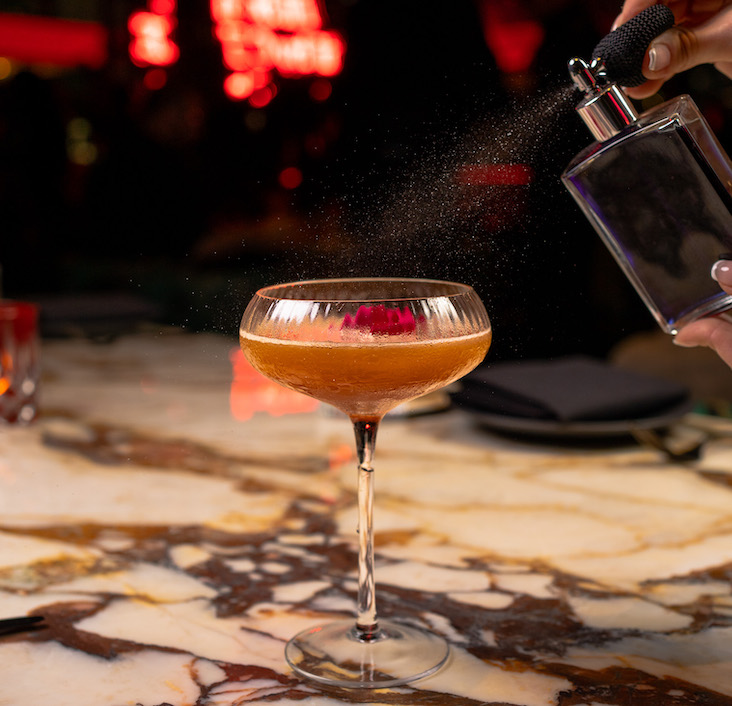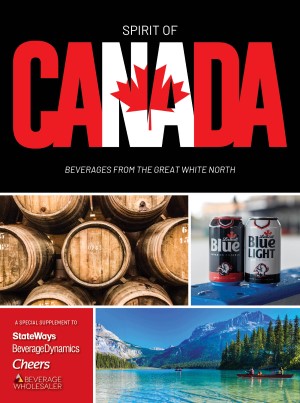Roll Out The Barrel
Super premiums and high-end expressions proliferate as small batch, extra-aged and single barrel bourbons draw new consumers and lots of attention to the category. by Nicolas Furlotte
It’s a hot summer night in Manhattan’s Greenwich Village, a long way from the heart of Kentucky’s bourbon country, where about 400 whiskey aficionados have turned out to taste some of America’s finest native spirit and meet Bill Samuels, Jr., the ceo of Maker’s Mark, at a local hot spot.
While bourbon has benefited to a limited degree from the resurgence of classic cocktails, including Manhattans and bourbon sours, it is not so much the cocktail shaker as the tumbler and snifter that are the touchstones of a new and growing interest in straight whiskey, particularly high end, hand-crafted bourbons.
It is a measure of bourbon’s increasing sophistication and popularity that it can draw a New York crowd at all, let alone 400 or so city slickers who have come to greet one of the stars of the bourbon business. And it’s not just New York. “I can’t walk into a bar or restaurant anywhere in the country it seems where people aren’t asking me to autograph a napkin or sign a bottle. And it’s not me,” jokes Samuels, “I’m as dumb as ever.”
After decades of declining sales and diminishing expectations, bourbon is once again starting to get the respect, appreciation and accolades it deserves from consumers and the trade. In part, this turn in bourbon’s fortunes is due to the strong economy which is fueling growth of new super premium entries across a wide range of spirits categories, as well as to the seemingly unending quest on the part of consumers for the next hot thing. And bourbon is one of the hottest things consumers are discovering. As Samuels wryly observes, “Bourbon has transcended barefoot and backwards to urban and sophisticated.”
Interestingly, Samuels doesn’t see a wholesale revival of bourbon in the making. “I don’t see a brown spirits revolution coming,” but rather an increasing emphasis on leading brands that transcend the category such as Maker’s Mark, Jim Beam and Jack Daniel’s, as well as finely crafted small batch products. “The one question I ask people is what they drank before Maker’s Mark and I am astounded that most of them did not drink bourbon; less than one-third of them drank bourbon or Tennessee whiskey.”
“There’s a whole new genre of consumers that are coming right into super premium spirits and that is happening in bourbon as well,” says Chris Morris, Brown-Forman’s national marketing manager for Woodford Reserve. “This consumer has broken the old southern heartland” of bourbon consumption. “In years past, you would not have seen many bourbons on the back bar in the northeast” and other non-traditional bourbon markets. “Now, you do see these small batch and single barrel products out there.” According to Morris and other bourbon marketers, the new bourbon aficionados are predominantly 30- to 40-year-old educated white males with relatively high disposable incomes– not unlike those who are drinking fancy vodkas, boutique tequilas and single malt Scotches.
Other factors are also helping to drive the renewed interest in bourbon. “There’s a return to an appreciation of fine distilled spirits and fine whiskies, in particular,” says Larry Kass, group marketing manager at Heaven Hill. “It’s a cultural phenomenon.” In addition, the consumer press has taken a liking to America’s native spirit with a resulting increase in flattering articles and upbeat reviews appearing in publications such as Playboy , Esquire and The New York Times Magazine as well as local newspapers and regional and special interest magazines.
Bourbon’s basic taste profile is also contributing to the current renaissance. “The American palate likes a sweet product,” observes Kass, “and bourbon is corn-based and therefore it has a sweet taste. So there’s a natural cultural predisposition to enjoy bourbon.” Further, Kass says, “You’re seeing a turn away from everything being positioned as ‘light.’ That’s no longer the button you have to push. It’s a much different world right now. If you can just get people to try the product they will become loyal users.”
Some of the new bourbon consumers are migrating from single malt Scotch and Irish whiskey. Often, however, they come with some pre-conceived notions that don’t quite fit the bourbon category, but at least they come. One such notion centers on age designation, an issue that has become central to the marketing of single malt scotch. While some bourbons do proclaim their age, others refer to themselves as “fully matured” or avoid the topic entirely.
By law, straight whiskey must be aged a minimum of one year in new oak barrels. Kentucky bourbon must be aged a minimum of two years, and any bottling less than four years old must state the age of the whiskey on the label. “For some brands it has become an age-claim game but not for others,” observes Brown-Forman’s Chris Morris. “You cannot compare bourbon and single malt scotch at all




